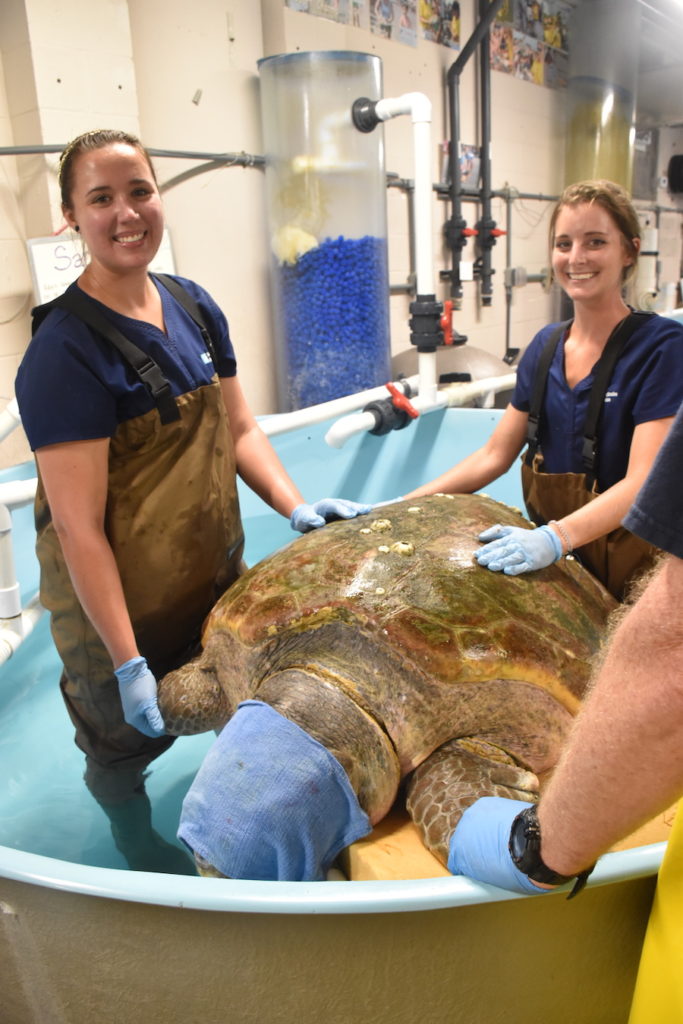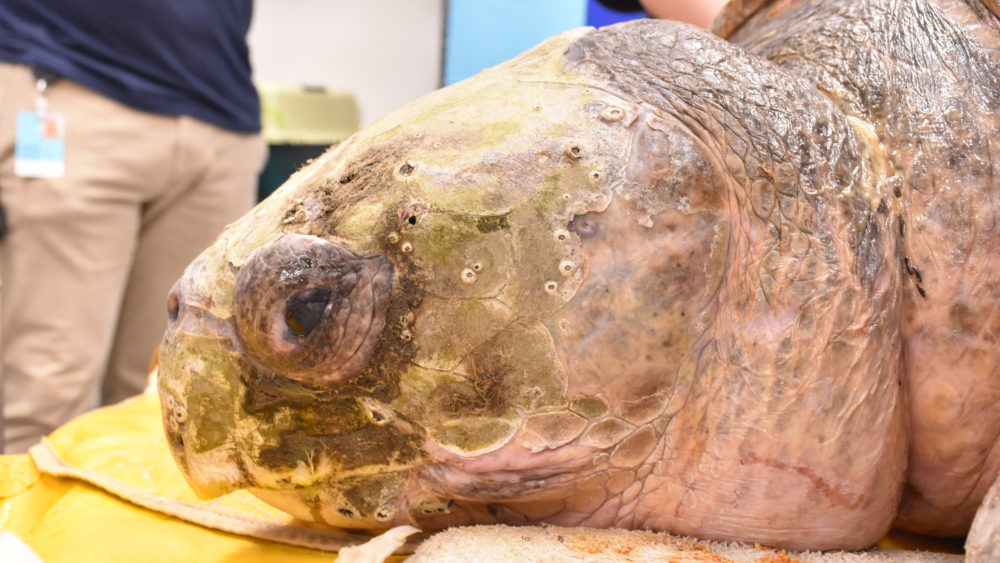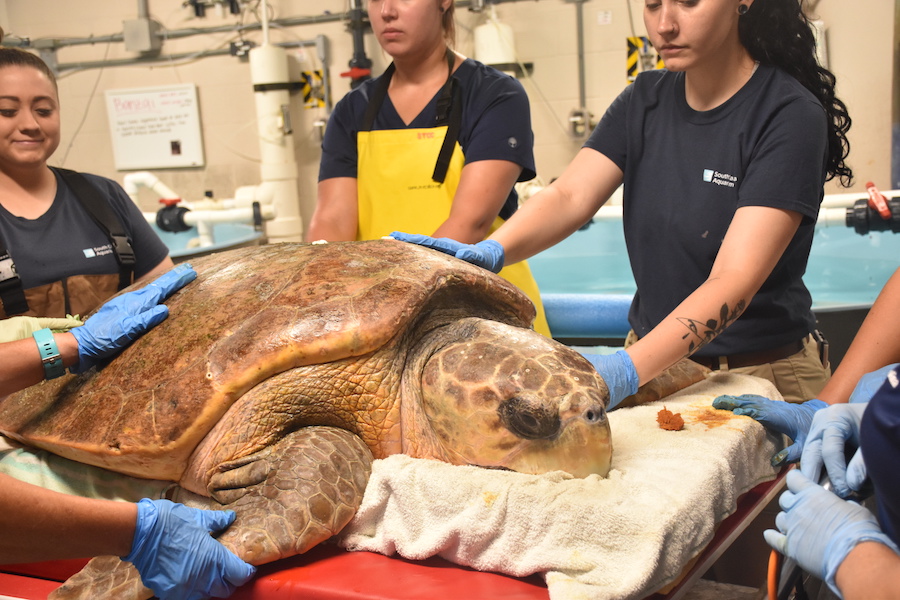Loggerhead (Caretta caretta)
Stranding Location: Cape Island, Cape Romain National Wildlife Refuge, McClellanville, SC
Arrival Date: 5/25/2019
Age: Adult
Weight: 132 kg (290 pounds)
Case History
Cape Romain National Wildlife Refuge staff and volunteers were finishing up their day doing nesting surveys when they spotted a sea turtle struggling nearby. Upon inspection they found it was a large loggerhead entangled in the rope of a crab pot, with the buoy and pot still attached. The rope was wrapped around her front flippers and neck. They worked on getting this robust turtle into their boat to get her checked out. The wounds from the rope didn’t look great so she was transported back to the boat landing, moved into a van and transported to the South Carolina Aquarium for treatment .
.
Treatment
When Sarabi arrived, she was alert and fairly calm considering the circumstances. Dr. Shane Boylan cut the rope and a team of eight people moved her onto a large cart with a scale to get a weight and transport her to the medical facility. This big momma weighed a whopping 290 pounds! Once upstairs we flushed her wounds, gave antibiotics, vitamins, checked her vitals, and applied topical treatments to the stricture wounds. We were able to use laser therapy, a method of treatment to help with wound healing, swelling, and pain. Since Sarabi was found in and near a vital nesting habitat in South Carolina, we used an ultrasound to check for eggs. She had a few shelled eggs and lots of egg follicles, confirming Sarabi is in fact a female and was likely in the area to nest. Sarabi was placed in a tank to rest overnight. She became very active as soon as we put her in the water, which is a great sign!
Updates
June 15, 2019: Sarabi is acclimating well in her new tank in the ICU. We currently have her in low water at a low salinity to help with wound healing. Keeping her in low water allows her to use her flippers minimally to move around until they are healed and stronger. We are giving her antibiotic injections and laser treatment therapy every three days. We hope she will begin eating soon. It is not uncommon for adult loggerhead sea turtles to take a few days or weeks to begin eating. They are used to blue and horseshoe crabs in the wild and now they’re getting offered fish- We wouldn’t know what to do either!
July 1, 2019: Sarabi quickly became very strong and feisty. We were giving her cold laser treatments to speed up wound healing on her affected flippers, and that quickly became difficult as she would splash us with a wave of tank water each time we attempted to pull her for treatment. We decided to leave Sarabi be once she finished her last antibiotic injections. She is now at a full tank of water and doing well but still not eating. She is coming out of her tank soon for an exam to see what is going on.
July 16, 2019: In the last couple of weeks, Sarabi has started eating! She is a bit picky but that is not surprising as adult loggerheads do become more specific about their diet in the wild as they grow older. Sarabi got an ultrasound to check her eggs/follicles. Not much has changed since her previous ultrasound, and we are continuing to monitor her reproductive status. Her wounds are healing wonderfully.
August 1, 2019: Sarabi has begun eating regularly, and her wounds look fantastic. In the next few weeks, we hope to move her up to Zucker Family Sea Turtle Recovery for the long-term portion of her rehabilitation. She has put a lot of work into healing, and you barely tell that she was entangled!
August 15, 2019: Sarabi’s entanglement wound is almost completely healed! She’s a very active and splashy lady!
September 1, 2019: Sarabi was tagged this week and we drew blood to see how she is doing medically. Her entanglement wounds looked amazing and so far her bloodwork is looking positive. We have to wait for the complete bloodwork panel to come back from the lab before we can make a decision on whether she is ready for release or not. We did an ultrasound on Sarabi as well and it looks like her egg follicles are in regression meaning she is no longer making any eggs. This is the time of year that should be happening naturally so she is right on track!



